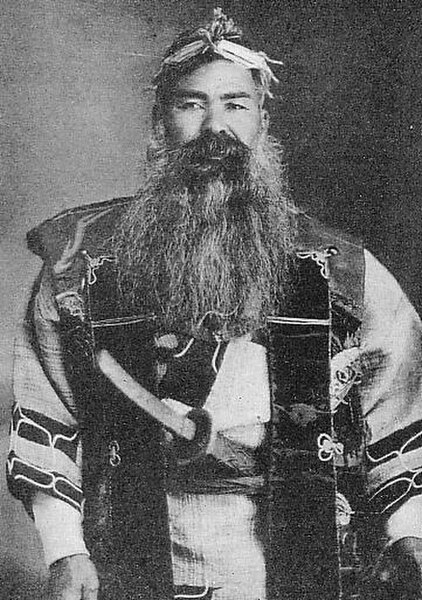The Matsumae Domain (松前藩), a prominent domain during the Edo period, was situated in Matsumae, Matsumae Island (Ishijima), which is currently known as Matsumae Town, Matsumae District, Hokkaido, via Tsugaru District, Oshima Province. The clan's leader, also known as the lord of the domain, constructed Matsumae Fukuyama Castle in the same location and henceforth, the clan came to be referred to as the Fukuyama clan. In 1868, the castle was relocated to Tatejo in Assabu-cho, Hiyama-gun, within the territory, and was known as Tatehan during the Meiji period. Initially, the Matsumae clan's jurisdiction was limited to the Wajin territory on the Oshima Peninsula in southwest Hokkaido. However, they gradually expanded their control over the Ezo region, which is now part of Hokkaido, and transformed it into their domain. The clan's economic foundation relied on their exclusive trade with the Ainu people of Ezo, which set them apart from the agricultural-based governance principles of the Shogunate system. Towards the end of the Edo period, the shogunate often assumed control over Ezo.

Restored castle tower of Matsumae Castle
Matsumae Norihiro, the 13th next to last daimyo of Matsumae Domain
Matsumae Nagahiro, final daimyo of Matsumae Domain
The Ainu are an ethnic group comprising related Indigenous peoples who are native to northern Japan, including Hokkaido and Northeast Honshu, as well as the land surrounding the Sea of Okhotsk, such as Sakhalin, the Kuril Islands, the Kamchatka Peninsula, and the Khabarovsk Krai; they have occupied these areas known to them as "Ainu Mosir", since before the arrival of the modern Japanese and Russians. These regions are often referred to as Ezochi (蝦夷地) and its inhabitants as Emishi (蝦夷) in historical Japanese texts.
Ainu at a traditional wedding ceremony in Hokkaido
Hokkaido Ainu clan leader, 1930
A photograph of Tatsujiro Kuzuno [ja], an Ainu individual famous for being a promoter of Ainu culture
Sakhalin Ainu in 1904






![A photograph of Tatsujiro Kuzuno [ja], an Ainu individual famous for being a promoter of Ainu culture](https://upload.wikimedia.org/wikipedia/commons/thumb/8/81/Tatsujiro_kuzuno.JPG/402px-Tatsujiro_kuzuno.JPG)
